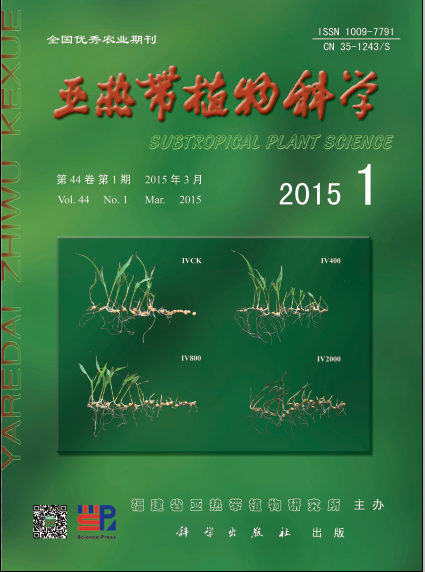|
|
Genetic Variation Analysis of Salt-tolerant Mutant from Maize Inbred Lines (AS-9)
YANG Feng-jiao,LI Hong-ying,LU Cun-fu,CHEN Yu-zhen
2015, 44(01):
1-7.
DOI: 10.3969/j.issn.1009-7791.2015.01.001
Chemical mutation was an effective way of creating new germplasm resources. To analyze the impact of chemical mutagenesis on AS-9 maize inbred offspring, the salt tolerance and genetic variation between mutant M4 and the corresponding original material (AS-9) were evaluated by using 44 pairs of SSR markers that may be associated with root traits. Seed germination, bud length and root number of M4 were higher than that of AS-9. After treatment with 200 and 250 mmol.L-1 NaCl for 7 days, root numbers of IV400 and IV1600 seedlings were higher than that of AS-9, with increases of 23.1% and 19.1%, respectively.IV1600 primary root lengths of 1, 2, 3 were 1.33, 1.70, and 2.15 times longer than that of AS-9, respectively. Twenty five pairs of SSR primers gave profiles amplified in sample of M4 mutants, accounting for 56.82% of the total pairs of primers. The average value of genetic similarity coefficient between IVCK and M4 was 0.6563. With the centered genetic similarity coefficient of -0.04 by UPGMA, the maize inbred line materials were divided into three groups: the original material (IVCK), the M4 mutants including IV1400, IV1600, IV2000, and other M4 mutants (IV200, IV400, IV800, IV1200). Principal component analysis and clustering results were similar. In addition, SSR-PCR products amplified by six pairs of primers were sequenced, the results showed that there was distinct variation between AS-9 and the induced M4, indicating chemical mutagenesis made maize inbred AS-9 produce a wide range of genetic variation.
References |
Related Articles |
Metrics
|
